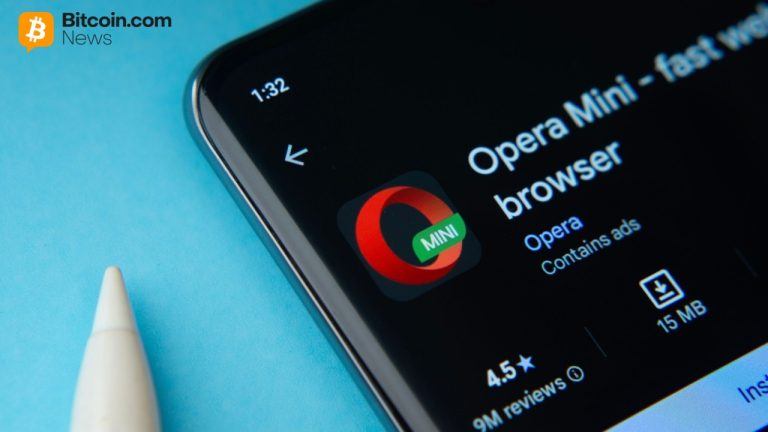How federal funds are fueling 10 top transportation infrastructure projects
11 min read
It’s been more than a year since Congress launched historic infrastructure support with the $1.2 trillion Infrastructure Investment and Jobs Act and helped jumpstart what is being dubbed America’s “infrastructure decade.”
Since the November 2021 enactment of the IIJA, states have started 29,000 transportation improvement projects, according to the American Road & Transportation Builders Association. In the first four months of 2023, states have initiated an additional 7,400 projects.
Here we take a look at some of the most prominent public transportation infrastructure projects, including a fresh look at cost estimates and funding sources. Even as federal cash flows, and President Biden’s 2024 budget would allocate billions more for some of the most high-profile projects, inflation and labor shortages continue to drive up costs and uncertain future political support on federal and local levels may prove to be another obstacle.
Brent Spence Bridge
Among the projects on this list, the Brent Spence Bridge has advanced the most on the windfall of IIJA funds. The long-stalled $3.6 billion bistate project to build a new bridge and rehab the existing one across the Ohio River connecting Ohio and Kentucky earlier this year won $1.635 billion in federal grant funding from the IIJA.
The two states are expected to split the costs, which will include providing large local matching grants and doing the approach work on their respective sides. Ohio’s price tag for that work is around $2 billion and Kentucky’s $1.6 billion, according to the project’s website.
The existing bridge carries more than $400 billion in freight per year over the Ohio River and is considered the country’s second-worst truck bottleneck. The federal awards reflect key political support from powerful Sens. Mitch McConnell of Kentucky and Sherrod Brown of Ohio.
The $1.635 billion included $1.385 billion from the Bridge Investment Program and $250 million from the megaprojects program, and marks “the largest infrastructure funding allocation for a single project provided so far by the USDOT under President Biden,” according to the Eno Center for Transportation.
There are local concerns about the bridge’s environmental impact, as the bridge and surrounding roadways carry over 160,000 vehicles per day, as well as the bridge and surrounding ramps’ impact on greater Cincinnati.
The design-build contract is expected to be announced on March 31 and construction for the project is expected to begin in earnest later this year.
I-45 North Houston Highway improvement project
Two years after federal authorities hit the pause button on Houston’s high-profile highway expansion over civil rights concerns, the controversial I-45 North Houston Highway Improvement Project is now back on track.
The $9.7 billion expansion of Interstate 45 through metro Houston will advance after the Texas Department of Transportation and Federal Highway Administration this month signed a voluntary resolution agreement resolving the FHWA’s investigation.
The highway project has been in development for nearly two decades and was put on hold early in the Biden administration following a lawsuit filed by Harris County and an investigation by the FHWA over concerns that the project would displace residents in historically disadvantaged neighborhoods and worsen air quality. The FHWA halted the work based on the Civil Rights Act, which prohibits discrimination in dispensing federal funds.
“This agreement moves forward an important project, responds to community concerns, and improves the North Houston Highway Improvement Project in ways that will make a real difference in people’s lives,” Federal Highway Administrator Shailen Bhatt said in a statement. “We have lifted the pause, and with FHWA oversight, TXDOT may proceed with design and construction.”
The plan will rebuild much of the downtown highway system by adding four managed express lanes on I-45 from downtown Houston to Beltway 8, which ranks in the top 20 truck bottlenecks nationally, according to the American Transportation Research Institute. The project includes pedestrian and bike trails as well as the development of new green spaces and the minimization of the highway’s current presence in green spaces.
It’s one part of the state’s $85 billion transportation plan over the next decade, which will be funded by state DOT and federal money. Construction could start as early as next year, according to local reports.
California high-speed rail
The nation’s most expensive infrastructure project, with a price tag of up to $128 billion, is also among the most precarious due to persistent cost increase and uncertain future revenue sources.
The 500-mile line promises a ride time of less than three hours between San Francisco and Los Angeles along a route that travels through the cities of the Central Valley.
Funding for the initial 171-mile segment faces a funding shortfall of more than $8 billion, and the shortfall for the full 500-mile route is estimated at $100 billion.
The California High Speed Rail Authority is depending on a massive influx of federal funding – totaling $8 billion over the next five years – to advance the 171-mile route, a shortfall that analysts say is likely to grow larger. Even with the full federal funding, the authority says the state will have to create a new revenue stream after 2030 to keep the controversial project moving forward.
President Joe Biden is a well-known train aficionado, and Transportation Secretary Pete Buttigieg has expressed his support for high-speed rail during various Congressional hearings.
But a new Republican majority in the House could hurt the effort. House Speaker Kevin McCarthy, a Republican from Bakersfield, California, recently told CalMatters that “in no way, shape or form should the federal government allocate another dollar to California’s inept high-speed rail.”
The authority in March released a project update, the most comprehensive report since December 2021, that showed cost increases and a likely future shortfall, coupled with a 25% dip in projected future ridership.
“More than anything, the project needs stabilized, long-term funding,” said authority CEO Brian Kelly in an introduction to the latest project update.
Maryland 270/American Legion Bridge
A project that would be the largest public-private partnership in the country has hit a major snag after the private entity pulled out in March.
Australia-based toll road operator Transurban, the lead partner in a consortium known as Accelerate Maryland Partners, terminated the preferred developer agreement with the Maryland Department of Transportation, citing environmental delays, lawsuits, and disagreements with the state.
The termination signals the importance of political support to P3 projects. Its biggest cheerleader, former Gov. Larry Hogan, a Republican, was term-limited out of office in January, and his successor, Democratic Gov. Wes Moore, is less supportive of the project.
The $9 billion, 50-year design-build-finance-operate-and/or-maintain P3 would replace the American Legion Bridge on I-495, add toll lanes to the bridge and along an expanded I-270 and part of the Capital Beltway to connect to hot lanes in northern Virginia.
It will likely be a few months before the state announces its next move. The feds last year gave final environmental approval for the first phase, and Transurban’s termination “has no bearing” on the state’s “commitment to addressing congestion issues affecting the region,” Moore’s office said in a statement.
Gateway Project
After years of fits and starts, the New York-New Jersey Gateway project has finally started to see some federal funds flow and hopes to nail down major federal support over the next year.
Gateway is “one of the biggest and most consequential projects in the country,” President Biden said at a press conference in January announcing a $292 million federal grant that will be used to complete a $649 million concrete casing to preserve right-of-way for a new two-track tunnel under the Hudson River.
The new Hudson Tunnel, with a $16 billion price tag, is the centerpiece of first phase of the Gateway Program, which will rebuild and rehab rail infrastructure projects between Newark, New Jersey and Penn Station in New York City along the Northeast Corridor, the most heavily used passenger rail line in the U.S. that contributes 20% of the national GDP.
Earlier this year, the project – like California’s high-speed rail – lost out on a $900 million MEGA grant after federal authorities said it failed to hit three criteria, including being cost-effective.
The Gateway Development Commission, the special purpose entity created to overseeing planning and finances, hopes to resolve the issues and move toward a full funding grant agreement by next year.
After being stalled by the previous administration, Biden has proposed major funding for the Hudson Tunnel in his 2024 spending plan. It includes $700 million in fiscal 2024 appropriations and recommends a multi-year grant agreement with $5.85 billion of capital improvement grants over the next decade, for a total of $6.65 billion for the project. Congress would need to approve the funding.
Sound Transit
Seattle’s light rail system, known as Sound Transit, has long enjoyed a steady flow of federal grants and loans on top of the sales taxes that support the popular system and its planned expansion.
The project, which is dubbed the nation’s most ambitious transit expansion, will more than double the region’s light rail service to 62 miles from its 26 miles, and later extend it to a 116-mile loop, five times larger than it is today.
Already the recipient of the largest-ever package of Transportation Infrastructure Finance and Innovation Act loans for a single borrower, which totaled $3.8 billion for six projects, the expansion has also received $2 billion in Federal Transit Agency grants. It enjoys strong political support from Senators Patty Murray, D-Wash. and Maria Cantwell, D-Wash., who last week announced an additional $173 million in new TIFIA loans to support the Hilltop Tacoma Link Extension and the Lynnwood Link Infill Station.
President Biden’s fiscal 2024 proposal would allocate $251 million for the expansion and $100 million in early funding for the capital investment grant program.
Overall, Sound Transit’s financial plan assumes that 19.5% of its capital costs will come from federal sources.
The current price tag hangs around $15 billion, up from $9 billion project in 2016, due in part to rising real estate values – which the project needs to acquire to expand – and the time it takes to secure permits from 53 local governments, according to local reports.
Voters have three times approved sales tax increases to fund the expansion, in 1996, 2008 and 2016.
Second Avenue Subway – MTA
Like the Gateway program, New York’s Metropolitan Transportation Authority’s Second Avenue Subway expansion would profit from Biden’s 2024 budget plan.
The budget would send $500 million to the second phase of the subway extension, which is in the preliminary design phase, as well as multi-year capital investment grants totaling $3.4 billion over the next 10 years.
The $7.69 billion, 1.76-mile project will extend the MTA’s Q line into Harlem while creating three new stations, power substations, communications systems, and car cleaning facilities.
The project is expected to open by 2028 with an annual operating cost of $91.8 million.
The extension is among the costliest transit projects in the world, with Eno Center for Transportation putting the Phase One per-mile cost at $3.5 billion, though the MTA estimates the cost at $2.3 billion per mile. That two-mile phase opened in 2017.
MTA is holding a public hearing Thursday to solicit public comments on proposed property acquisition needed to push Phase 2 forward. In addition to acquiring the land needed for rail expansion, MTA is also trying to make up a funding gap linked to lower ridership by installing a congestion pricing plan that would charge tolls on some of the area’s main roadways.
The MTA’s 2023 budget reveals significant structural problems with a gap that could be as high as $1.6 billion. In August, the MTA said federal pandemic relief funds would be exhausted by the end of fiscal 2024 and projected budget gaps of up to $2.7 billion a year in the fiscal outyears as farebox revenue remains depressed.
Chicago CTA Red Line expansion
Along with the Gateway and MTA, the Chicago Transit Authority’s high-profile plan to extend the Red Line to the city’s far South Side won the support of President Joe Biden in his proposed 2024 budget, which recommends $2.24 of multi-year capital improvement grants.
The $3.7 billion plan, which would extend the Red Line train 5.6 miles south, received a notable local boost in December 2022 when the Chicago City Council approved legislation that sets up a transit tax-increment financing district. The TIF is expected to raise $959 million for the project, which will support the city’s case for the federal grants.
The CTA hopes to gain entry to the engineering phase by mid-2023 and receive a full funding grant agreement in late 2024.
The extension includes four new stations and is scheduled to open for service in late 2029. According to the RTA, 67 million riders used the Red Line in 2019, making it the CTA’s most heavily trafficked line.
The CTA is facing the same challenges of other large transit agencies like the MTA: a pandemic-induced lag of riders, coupled with a labor shortage and safety concerns. A coalition led by the Chicago Metropolitan Agency for Planning has been meeting since last January looking for answers to a problem expected to worsen as pandemic relief funds are exhausted. The CTA and all urban transit agencies would benefit from a Biden budget policy recommendation that would allow them to use FTA capital grants for operations in the coming fiscal year.
Project Connect Austin transit
Austin voters in 2020 approved the use of property taxes to fund the Project Connect transit system, that includes light rail, with an estimated cost of $7.1 billion. By April 2022, it was projected to cost $10.3 billion. Now Austin transit officials have moved to whittle down the project, offering five lower-cost options, each with a price tag of around $5 billion. Local tax revenue combined with future federal funds, will be sufficient to support the new scope, officials said.
The cost increase is partly due to real estate prices along the lines, which jumped to $1.19 billion from $250 million – and cost increases for a downtown subway tunnel that doubled to $4 billion.
The Austin Transit Partnership, which is overseeing Project Connect, is expected to vote on a final selection in June.
EV charging stations
On the national front, an effort to build out an interstate network of 500,000 electric vehicle charging station by 2030 is one of the key goals of the IIJA.
Federal funds are poised to flow and states are laying out their plans, but it remains to be seen how the deals will be structured. The state departments of transportation will receive most of the federal funds — though cities and towns will be eligible for some — and it’s likely that the DOTs will want to partner with private entities to build or manage or maintain the network.
“The private sector is going to be vitally important” for building the national EV charging station network, said Texas DOT executive director Marc Williams, speaking Tuesday at a House Highways and Transit subcommittee hearing on the implementation of the IIJA. “We as a DOT don’t have the mission or the ability to rely upon our state resources to maintain these EV charging stations.”
The IIJA included two primary grant programs dedicated to electric vehicle charging, $5 billion in formula funding that will go to the states under a program called the National Electric Vehicle Infrastructure program and $2.5 billion in competitive grant funding, open to cities and other local jurisdiction, called the Charging and Fueling Infrastructure Grants.
Both programs prioritize charging infrastructure along the National Alternative Fuels Corridor, a network of designated highways nominated by states with signage to highlight routes with available charging stations open to the public and easily accessible. Both grant programs also have an 80% federal cost share, meaning states must provide 20% of project costs.
This month, the Biden administration released minimum standards for the NEVI program, published an implementation plan for the Build America and Buy America EV charging requirements, and opened applications for $700 million in discretionary grant program funding.







